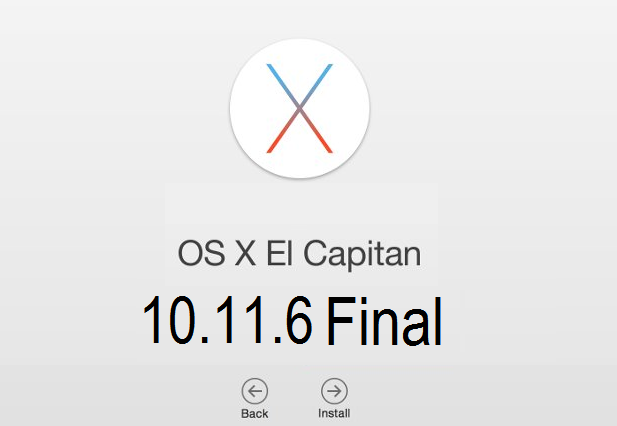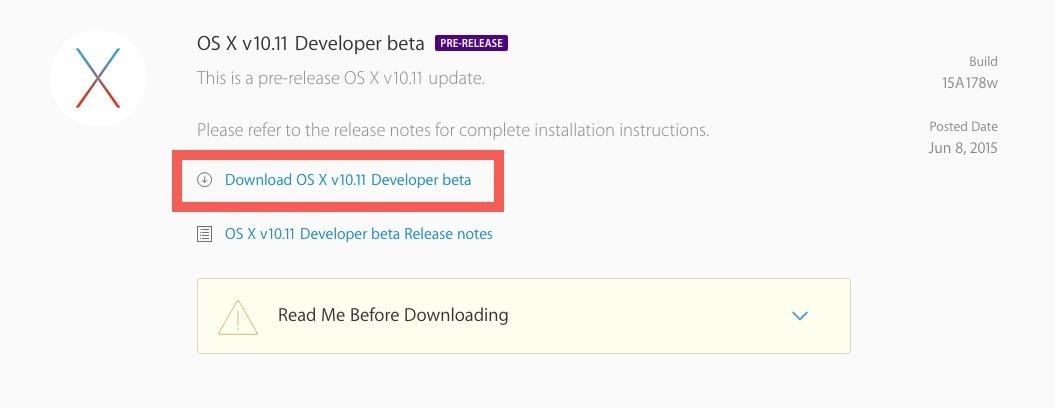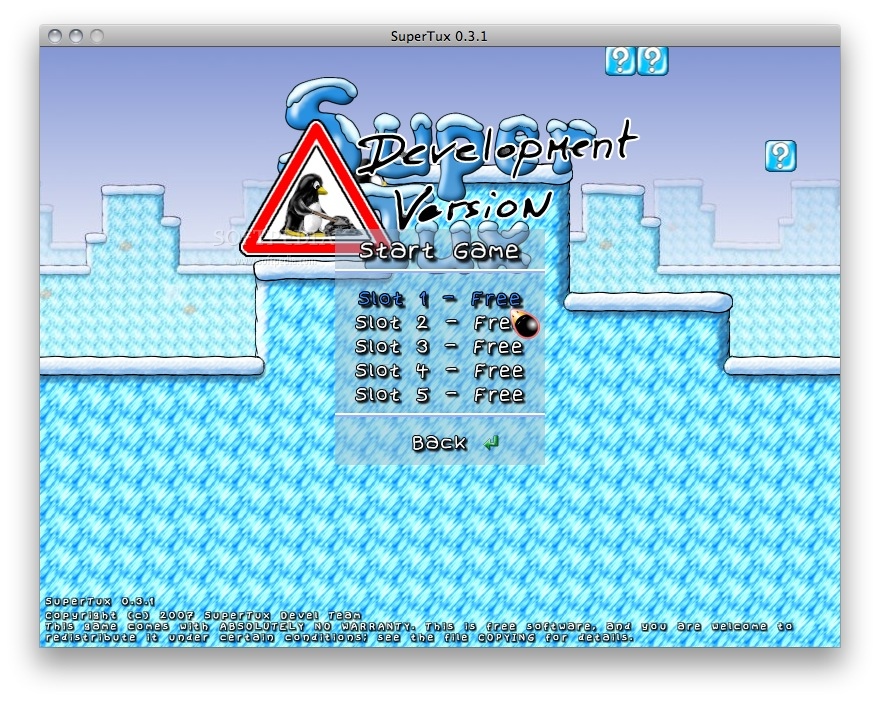- Mac Os X 10.11 Download Free
- Mac Os X 10.11.3 Dmg Release
- Mac Os X 10.11.3 Dmg File
- Mac Os X Download For Windows
Mac OS X Mavericks is no longer available to download from Apple store. However, we can still download Mac OS X 10.9 Mavericks.DMG right in this topic without an Apple store using direct download. To get latest macOS 10.13.3 Final Update directly and officially from Apple, Mac users can navigate to App Store Software Update option on any Mac laptops or desktop computers. If you want to perform the manual and clean installation of macOS High Sierra 10.13.3 Update without the app store, then you can free download.DMG or.PKG offline.
If you’re bored of working macOS Catalina, macOS Mojave, and want to try a different version of macOS. But are confused which version of macOS should I choose and try, accidentally macOS X El Capitan attracts you. So let’s get to know about macOS X El Capitan and its features. Here’s how to download Mac OS X El Capitan DMG file also.
macOS X El Capitan is a stable version of OS X and it is quite different and known as the advanced version of Mac. This operating system contains countless supplements and a variety of work capacities. In this launch, Apple primarily concentrated on compatibility, security, and stability. The consistent updates made El Capitan more reliable than other OS X.
From every perspective, macOS El Capitan is a powerful version of macOS. There are really much features such as numerous new updated components and fixes and updates for mailboxes in Mail, numerous issue fixes, and lots of other which carries lots of improvements for Mac operating system, and a new system font, split-screen view, changes to the mission Control Window Manager, improvements to the Spotlight search, fix mail sending problem. Let’s download Mac OS X El Capitan DMG file.

- Related:Download macOS Catalina DMG File – (Direct Links)
Mac OS X El Capitan Features
The macOS Catalina features are ready to use once you install macOS X El Capitan. Then you can enjoy macOS El Capitan features and new updates. The list of features are as excellent protection, performance, and usability of OS X. Problem-solving, and improve features. Provides excel adaptability with Microsoft Office 2016. Improvements for different audio plugins and Voice Over security. Various improvements for Maps, Safari, and Notes. Over 150 new emoji styles are added.
There are also more useful features which are improved like Photo, Safari, and more. Which are only usable when you install and use this operating system. Now we will download Mac OS X El Capitan DMG file.
- Related:Download macOS High Sierra DMG File – (Direct Links)
Download Mac OS X El Capitan DMG File – (Direct Links)
Download Mac OS X El Capitan DMG File – (Direct Links)
However, for downloading macOS X El Capitan, if you’ve an old version of macOS X, you can probably download macOS X El Capitan from the App Store. Otherwise, you can’t download macOS X El Capitan from the Store since it’s not available there.
If you’ve installed the older version of macOS, then you can also upgrade to macOS El Capitan but requires a few things. The requirement is as at least 2GB of memory and 8.8GB of available storage space. You can also upgrade to OS X El Capitan from OS X Snow Leopard or later on, however, you can also download macOS Catalina DMG file.
One important thing which is very necessary is for the download process, to check your internet connection. If you have a stable internet connection you can easily download El Capitan DMG and the download process will not take your much time. Just download Mac OS X El Capitan DMG file.
- Related:Download macOS Mojave DMG File – (Direct Links)
If you have checked and covered the requirements, you are ready to download the macOS X El Capitan DMG file. For downloading macOS X El Capitan, simply click the link below we have provided.
- macOS X El Capitan Final DMG – This is the direct link for downloading macOS X El Capitan DMG which is only for Mac users and you can also download macOS X El Capitan DMG from Windows or Linux. This is download Mac OS X El Capitan DMG file.
You can download this file as easy as clicking on the link and this file isn’t available on the App Store as you typically search for macOS X El Capitan. In terms of installing, there are no specific requirements so after you’ve the file, you can install it instantly.
The reason OS X El Capitan is still in approach for Mac users. That’s not because it’s useful, but its also a way for unsupported Macs to download and install this version since they can’t install macOS Catalina and newer versions. But if your running macOS Catalina, macOS Mojave, or macOS High Sierra so you can easily download and install macOS X El Capitan on your Mac with download Mac OS X El Capitan DMG file.
Install Mac OS X El Capitan
With these up points, Mac OS X El Capitan might have made the idea of how much useful still it is like Windows 7. Though Windows stopped support for Windows 7, Windows users still like and install it as backup and even as their actual operating system to work. That’s because it’s fast, easy and doesn’t require much power, resource, high amount of disk space and other resources.
- Related:How to Install macOS Catalina on VMware on Windows PC
After finding the file, if you’re going to install Mac OS X El Capitan on your Mac, take a backup of your personal files and folders. Once you’ve that, simply head to the installation and no need to worry more. This is the direct link of the Mac OS X El Capitan DMG file. As soon as you click the link, it will start the process.
I hope you’ve a better perspective of El Capitan now and I hope the file is approached to you with ease. We try hard to provide the most but easiest to serve services and never upset anyone. That was download Mac OS X El Capitan DMG file.
At work we will be deploying Office 2016 to campus this summer and it requires at least MacOS X version 10.10. In our environment we normally don't upgrade operating systems in place so we have a fair number of computers with earlier versions installed. This presents a problem. Our initial thought was that we would need to deploy the sneaker net and get to work. I realized that the K1000 detects Mac OS X as an installed program so I wondered if I could setup a managed install to deploy it and it turns out you can. I used the following procedure to deploy Mac OS X 10.11 El Capitan but it should also work for other versions.
Step 1: Download the OS Installer from the AppStore
If you don't already have a copy of the Install OS X El Capitan application from the Apple AppStore login and download a copy of it. You can leave it in the /Applications folder.
Step 2: Build a Mac OS X install package
Download createOSXInstallPkg script from GitHub and store it somewhere on your computer.
Open a terminal window and change to the location of the script.
The documentation for the script is well written but there isn't too much necessary for a basic package. The following command will create the package in the same location as the script:
sudo ./createOSXInstallPkg --source /Applications/Install OS X El Capitan.app/
You should end up with a file named something like InstallOSX_10.11.3_15D21.pkg. The version and build number (10.11.3 and 15D21 respectively) will depend on when you download the installer from the App Store.
Step 3: Create a disk image to hold the package
The K1000 appliance will deploy packages stored on a disk image and I have found this method to be the most reliable for uploading packages to the appliance.
Open Disk Utility
Click New Image
Give the disk image a name, I called mine MacOSX_10.11.3_15D21.dmg.
For the size you need to make the image larger than the size of the package because once the disk is formatted it will loose some space. My install package was 6.1GB so I made the disk image 7.5GB.
Leave the Format, Encryption, Partitions and Image Format defaults.
Click Create
Step 4: Copy the install package to the newly created disk image
The disk image should be mounted when created, but if it isn't mount it and then copy the file to the volume. Once it is copied, unmount the disk.
Step 5: Copy the disk image to the K1000 appliance
The web interface won't allow you to upload files more than 2GB so you will need to mount the clientdrop share on your K1000 and copy the file there. If you have not already enabled the SAMBA share on your appliance login to the admin interface and browse to Settings, Security.
Step 6: Associate the disk image with the software title
When creating a managed install it is very important that you associate the installer with the correct title. If you have any doubt about which software title to use then I strongly recommend that you use the installer to update one machine in your environment manually and then associate the file with the software title found in that machines software inventory after the setup is complete and the machine has checked into the K1000 again.
Once you are satisfied that you have the correct software title select the disk image from the Upload and Associate Client Drop File menu.
In the Supported Operating Systems list select the operating systems that you will be upgrading to 10.11.
Save the software title.
Step 7: Create the managed install
In the K1000 interface click Distribution
Under Managed Installs click Choose Action, New
Give your MI a name, I called mine Mac OS X El Capitan Install
Select 10.11.3 software title from the dropdown
Set the execution option based on whether or not you want to interrupt users with the installation or not.
Leave the Default installation option selected
For the notification options we setup both Alert user before run and Completion messages. This is what we have set for our environment:
Alert user before run:
Your computer has been scheduled to be upgraded to OS X El Capitan (10.11). You can continue to use the computer and will be notified when the first phase is complete.
Completion message:
The first phase of your upgrade to Mac OS X El Capitan is complete. Please restart your computer to begin the next phase. Phase two will take about half an hour to complete.
Save the managed install.
You should now be able to target computers with the installation and they will receive the upgrade. Note that the first phase of the installation (before the computer restarts) is silent. Unless you use a completion message the user will not be prompted to restart. Once the computer does restart the installation will proceed. I have had varied reports of whether or not there is interaction required during this phase of the upgrade.
Mac Os X 10.11 Download Free
The installation of 10.11 has been resetting the Sharing preferences in our environment. We normally have remote login and remote desktop enabled for certain users and after the upgrade those options are turned off. Thankfully the KACE agent is still checking in so you can use a script to set those options. Here is our script:
#!/bin/sh
# start here

sudo /System/Library/CoreServices/RemoteManagement/ARDAgent.app/Contents/Resources/kickstart -activate -configure -allowAccessFor -specifiedUsers
sudo /System/Library/CoreServices/RemoteManagement/ARDAgent.app/Contents/Resources/kickstart -configure -users admin -access -on -privs -DeleteFiles -ControlObserve -TextMessages -OpenQuitApps -GenerateReports -RestartShutDown -SendFiles -ChangeSettings

Mac Os X 10.11.3 Dmg Release
sudo /System/Library/CoreServices/RemoteManagement/ARDAgent.app/Contents/Resources/kickstart -configure -clientopts -setmenuextra -menuextra no
sudo /System/Library/CoreServices/RemoteManagement/ARDAgent.app/Contents/Resources/kickstart -configure -clientopts -setvnclegacy -vnclegacy yes -clientopts -setvncpw -vncpw VNCPasswordHere
sudo /System/Library/CoreServices/RemoteManagement/ARDAgent.app/Contents/Resources/kickstart -restart -agent -menu -console
sudo systemsetup -setremotelogin on
Mac Os X 10.11.3 Dmg File
exit 0
Mac Os X Download For Windows
This post was also shared on my personal blog. http://chucksteel.blogspot.com/2016/03/deploying-macos-x-upgrades-with-dell.html